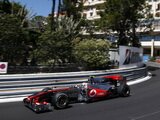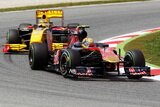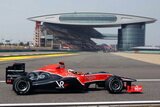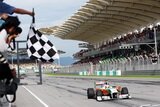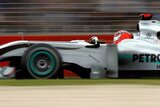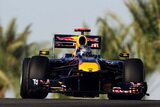Rampf said the philosophy behind the new car boiled down to what he described as “radical evolution”. The engineers development work focused on achieving a high level of aerodynamic efficiency coupled with a stable aero balance. Other development aims included improving mechanical grip in order to make the best possible use of the standard tyres, and reducing the weight of various components to allow maximum use of ballast in optimising weight distribution.
“The data which the F1.08 has delivered ahead of its roll-out is extremely promising,” said Rampf. “And the development work will continue full speed ahead up to the start of the new season. We have already come up with another aero package for the season-opener in Melbourne on 16th March, and this will also change the external appearance of the F1.08 once more.”
While the regulations governing aerodynamics remain unchanged in 2008, two other changes to the rulebook had a major effect on the F1.08s design: the introduction of a standardised electronic control unit (ECU) and the new reliability requirements for gearboxes, which must now be used over four Grands Prix. Since the ECU does not allow for traction control, among other functions, mechanical grip and sensitive accelerator control will gain in importance.
A particularly eye-catching feature of the F1.08 is its imposing front wing. But despite its appearance, the cars nose has actually slimmed down - in equal measure to the rear end - compared to its predecessor. The narrower engine cover has been designed with all-new extra wing elements. Another new and immediately noticeable feature are the rim shields, similar in appearance to those introduced by several teams last season.
formula1.com
Comments:


